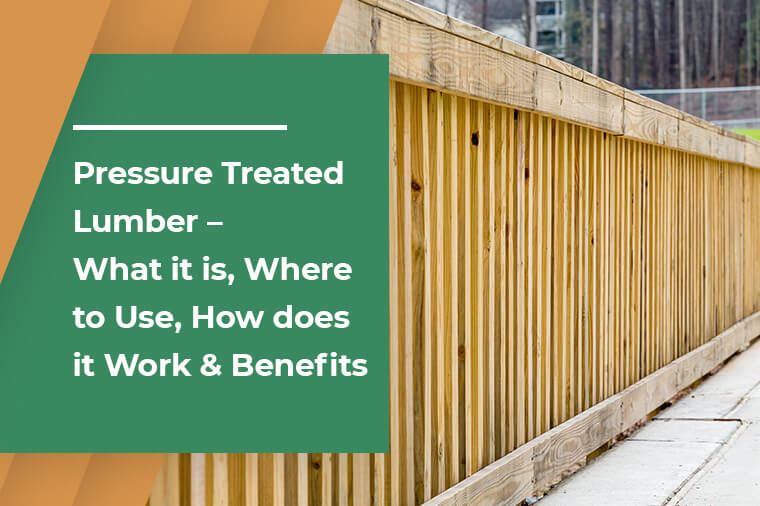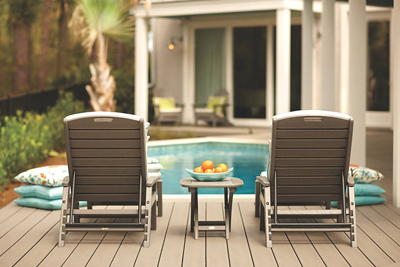Pressure Treated Lumber – What it is, Where to Use, How does it Work & Benefits

To All Our Valued Customers, Over the past few years, the Covid 19 Pandemic has forced us to adapt and change the way we do things on a day-to-day basis. Florida Lumber is no exception. To make sure that we remain strong and competitive in the market for the years to come, Florida Lumber has had to adjust and change our vision for the future. In the last 2 years, we have stopped selling Sheetrock and drywall products, roofing felt and roofing materials, and have even closed on Saturdays.
Over the last few months, we have been transitioning our way out of the door supply business so on August 31, 2022, our door shop will stop assembling doors. We will continue liquidating our doors from inventory until we are out of material.
Some customers have asked if we are closing or even moving locations. To set the story straight, we are not closing or selling the business and we are not moving. These changes are all part of our new vision and path to continue serving South Florida and increasing our footprint in the construction supply industry.
Our focus is going to be on Lumber, Construction Materials, Rebar Fabrication and Rebar Accessories. As we have liquidated some of the items that we don’t sell anymore we have created more space to buy a larger volume of our core items and pass on the savings to our customers.
In the next year you will start seeing changes that will help improve our ability to serve you, our customers. We appreciate your business and your patience as Florida Lumber’s new vision becomes reality.
A Todos Nuestros Valiosos Clientes En los ultimos anos, la pandemia de el Virus (Covid 19) nos ha forzado a adaptarnos y cambiar la forma de hacer cosas en el dia a dia. Florida Lumber no ha sido una excepcion.
Para asegurarnos de mantenernos fuertes y competitivos en el mercado en los anos venideros, Florida Lumber ha tenido que ajustar y cambiar nuestra vision para el futuro. En los dos ultimos anos hemos dejado de vender los productos de yeso (sheetrock), paneles de yeso (drywall), tela asfaltica (roofing felt), materiales de techo y cerramos los Sabados. En los ultimos meses, hemos estado en transicion para salir del negocio de suministro de puertas, en Agosto 31, del 2022 nuestra tienda de puertas dejara de construir y/o cortar puertas. Vamos a continuar liquidando nuestro inventario de puertas haste que terminemos todo el material. Algunos de nuestros clientes han preguntado si estamos cerrando o si nos estamos moviendo a otra localidad. La verdad es que no estamos cerrando, no estamos vendiendo y no estamos cambiando de localidad. Estos cambios son todos parte de nuestra nueva vision y camino a continuar sirviendo al estado sur de la Florida y incrementar nuestras huellas en la industria de suministros de construccion.
paneles de yeso (drywall), tela asfaltica (roofing felt), materiales de techo y cerramos los Sabados.
En los ultimos meses, hemos estado en transicion para salir del negocio de suministro de puertas, en Agosto 31, del 2022 nuestra tienda de puertas dejara de construir y/o cortar puertas.
Vamos a continuar liquidando nuestro inventario de puertas haste que terminemos todo el material. Algunos de nuestros clientes han preguntado si estamos cerrando o si nos estamos moviendo a otra localidad.
La verdad es que no estamos cerrando, no estamos vendiendo y no estamos cambiando de localidad. Estos cambios son todos parte de nuestra nueva vision y camino a continuar sirviendo al estado sur de la Florida y incrementar nuestras huellas en la industria de suministros de construcción.
2431 N.W. 20TH ST.
MIAMI, FL 33142
PHONE: (305) 635-6412
Sales Fax: (305) 633-4054
Accounting Fax: (305) 635-3723
Email: sales@tloridalumber.com

What is pressure treating?
Wood has been widely used in the making of furniture, building materials, wooden toys, and art and decoration items. Building materials demand strong wood that produces durable items. Raw wood doesn’t last long. The wood loses its strength and starts deteriorating over time. To increase the life of wood, it needs to be processed. This is also called preservation. There are various methods available that ensures the longevity of wood. The most popular among them is pressure treating. It protects the wood from environmental damage such as fungus and insects.
Pressure treating is a process where chemical treatment is applied to wood. The preservative chemicals are deeply forced into the cellular structure of the wood. The chemicals allow the wood to resist the aforementioned attacks. Before the start of a process, the wood is made moisture-free through a permanent process.
The treatment is carried out in closed cylinders with applied pressure or vacuum. The method is more beneficial over other similar methods. The process guarantees uniform penetration and higher absorption of preservatives. For large-scale production, this is one of the best methods available. The wood is put under tremendous pressure in a cylinder with additional temperature. In a final treatment, the excessive preservatives are removed through the vacuum. The same cycle is repeated until the desired result is attained. Chromate copper arsenate, or CCA, is mostly used for treating the wood.
Where to use pressure-treated wood?
Pressure-treated wood should be used for outdoor material. It should be strictly avoided for indoor use. The sawdust inherent in pressure-treated wood can cause high irritation to sensitive areas like the skin, eyes, and nose. The chemicals leaking out of wood are also very harmful. If used indoors, constant contact with wood can cause some serious health hazards to adults and can be very risky for a child’s typically more vulnerable health.
The wood is made for outdoor materials, as there will be less human contact in that setting. The chemicals used in outdoor materials won’t have any effect on the humans around them.
How does pressure-treated lumber work?
Pressure-treated lumber has been in use for 70 years. The treated wood guarantees full protection against fungi and bacteria. Exterior materials like building decks and fences have a high chance of decay, as they are exposed to the elements. Treated wood has chemicals inside of it that stops the attacks from insects. The chemicals don’t allow the bacteria to penetrate inside the wooden structures. It’s ideal as far as longevity and durability are concerned.
Outdoor materials are used on structures such as fences. Pressure-treated lumber very well serves the purpose of exterior materials.
Benefits of pressure-treated lumber:
Pressure-treated lumber has gained popularity among wood makers because of the advantages it offers. The benefits you can reap from the usage of pressure-treated lumber are significant:
Longevity: As mentioned above, pressure-treated lumber has a quality that withstands any damage caused by bacteria, insects, and fungus. The preservative per cubic foot standards imprinted on the wood provides an approximation of the lumber’s resistance level. Pressure-treated lumber holds up very well over time.
Strength: The pressure process builds the treated wood. The mechanism utilized prepares it to absorb any damage that is frequent. It constantly comes in contact with damage-causing factors yet because of its durability it continues to function perfectly. Exterior building materials need to possesses this type of strength.
Affordability: Pressure-treated wood is much cheaper than the other woods available on the market. The initial cost involved in the treatment is high, but in turn, repair and maintenance cost much less over time. Its longevity also eliminates the burden of periodic check-ups for the consumer.
Environmentally friendly: The energy required by the treatment process is much less as compared to other processes. Carbon used in the process is also derived from recyclable sources and can be discarded as waste. Though chemically processed, it doesn’t cause any major problems in the environment.
Low maintenance: It doesn’t need any extra care or high maintenance. The treated wood is able to withstand environmental attacks.
Pressure-treated wood has a long life and the strength to endure atmospheric shocks in terms of insects’ attacks. Users can completely rely on it, as it has a proven record of strength. It’s durable, tough, resistant and reasonable.

